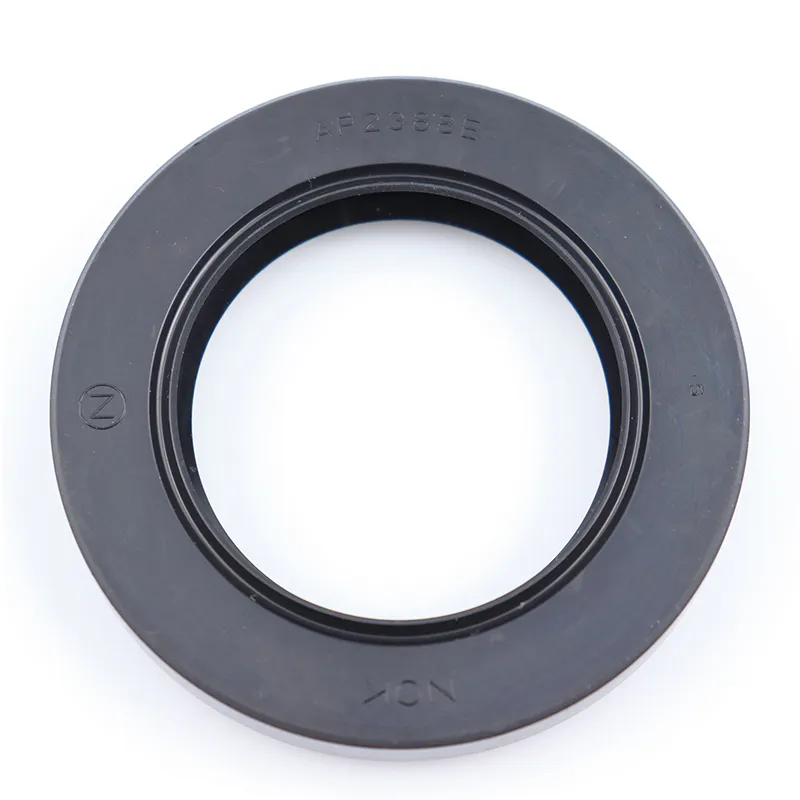Novemba . 17, 2024 21:53 Back to list
metric rod wiper seals
Metric Rod Wiper Seals An Essential Component in Hydraulic Systems
In the world of hydraulic systems, the effectiveness and reliability of performance depend heavily on the components that make up these systems. Among these components, the metric rod wiper seals play a crucial role in ensuring optimal functionality and longevity. This article delves into what metric rod wiper seals are, their importance in hydraulic applications, their design features, and considerations for maintenance and selection.
Understanding Metric Rod Wiper Seals
Metric rod wiper seals, often referred to simply as wipers, are sealing devices positioned at the outer edge of hydraulic cylinders. Their primary function is to prevent dirt, dust, and other contaminants from entering the cylinder when the rod extends and retracts. Designed specifically for metric applications, these seals are manufactured to fit standard rod diameters and are available in various materials to suit different environments and requirements.
Importance of Wiper Seals
The importance of wiper seals cannot be overstated. In hydraulic systems, contamination can lead to significant issues, including increased wear, decreased efficiency, and even catastrophic failures. Rod wiper seals act as the first line of defense, protecting the internal components of hydraulic cylinders from abrasive particles and moisture.
Maintaining a clean system is essential for preventing hydraulic fluid from degrading and for extending the life of other internal components, such as pistons and cylinders. By effectively sealing off the entrance, metric rod wiper seals contribute to the reliable operation of hydraulic machines, whether they are in industrial machinery, construction equipment, or mobile vehicles.
Design Features of Metric Rod Wiper Seals
1. Material Choices Metric wiper seals can be made from a variety of materials, including elastomers like nitrile, neoprene, and polyurethane. The choice of material depends on factors such as temperature, pressure, and the type of hydraulic fluid used.
2. Profile Variations The design of the seal profile is critical. Common profiles include U-cup, L-shaped, and T-shaped wipers. Each profile is tailored to provide specific performance characteristics and fit different rod diameters.
3. Dimensions Metric wiper seals come in standard sizes that conform to international metric measurements. This standardization allows for easier replacement and compatibility with a wide range of hydraulic systems.
metric rod wiper seals

4. Lip Design The seal lip design plays a pivotal role in how the wiper functions. A properly contoured lip can ensure effective wiping action while maintaining minimal friction against the rod, allowing for smooth operation and reduced wear.
Maintenance Considerations
To ensure a long lifespan for wiper seals, regular maintenance and inspection are crucial. Operators should routinely check for signs of wear, cracks, or deformities in the seals. If any issues are detected, timely replacement is vital to prevent contamination and ensure the smooth operation of the hydraulic system.
Additionally, keeping the surrounding area clean and free from debris will also prolong the life of the wiper seals. Implementing a routine cleaning schedule can greatly reduce the amount of dirt and grime that the wipers have to deal with, thus enhancing their operational efficiency.
Selecting the Right Wiper Seal
When choosing a metric rod wiper seal, several factors must be considered
- Application Requirements Identify the specific needs of the application, including rod diameter, stroke length, and working environment (e.g., exposure to chemicals, temperature variations).
- Material Compatibility Ensure that the material of the wiper seal is compatible with the type of hydraulic fluid being used.
- Performance Characteristics Assess the performance features of the seal, such as resistance to wear, temperature tolerance, and pressure rating, to ensure they align with the application's demands.
Conclusion
Metric rod wiper seals are a vital component in the efficiency and longevity of hydraulic systems. By understanding their role, design features, and maintenance requirements, operators can ensure that these seals function optimally. Proper selection and maintenance of metric rod wiper seals not only protect hydraulic cylinders from contamination but also enhance the overall performance and reliability of the equipment. Investing in high-quality wiper seals can result in significant cost savings and operational efficiency in the long run.
-
The Trans-formative Journey of Wheel Hub Oil Seals
NewsJun.06,2025
-
Graphene-Enhanced Oil Seals: Revolutionizing High-Pressure Oil Sealing
NewsJun.06,2025
-
Future of Hydraulic Sealing: Advanced Intelligent TCN Oil Seals
NewsJun.06,2025
-
Don’t Let a Broken TCV Oil Seal Ruin Your Day
NewsJun.06,2025
-
Bio-Inspired Dust Seals for Better Sealing Performance
NewsJun.06,2025
-
Biodegradable and Sustainable Hydraulic Seal Materials
NewsJun.06,2025
-
Top Oil Seal Solutions for Your Industrial Needs
NewsMay.22,2025
Products categories
















